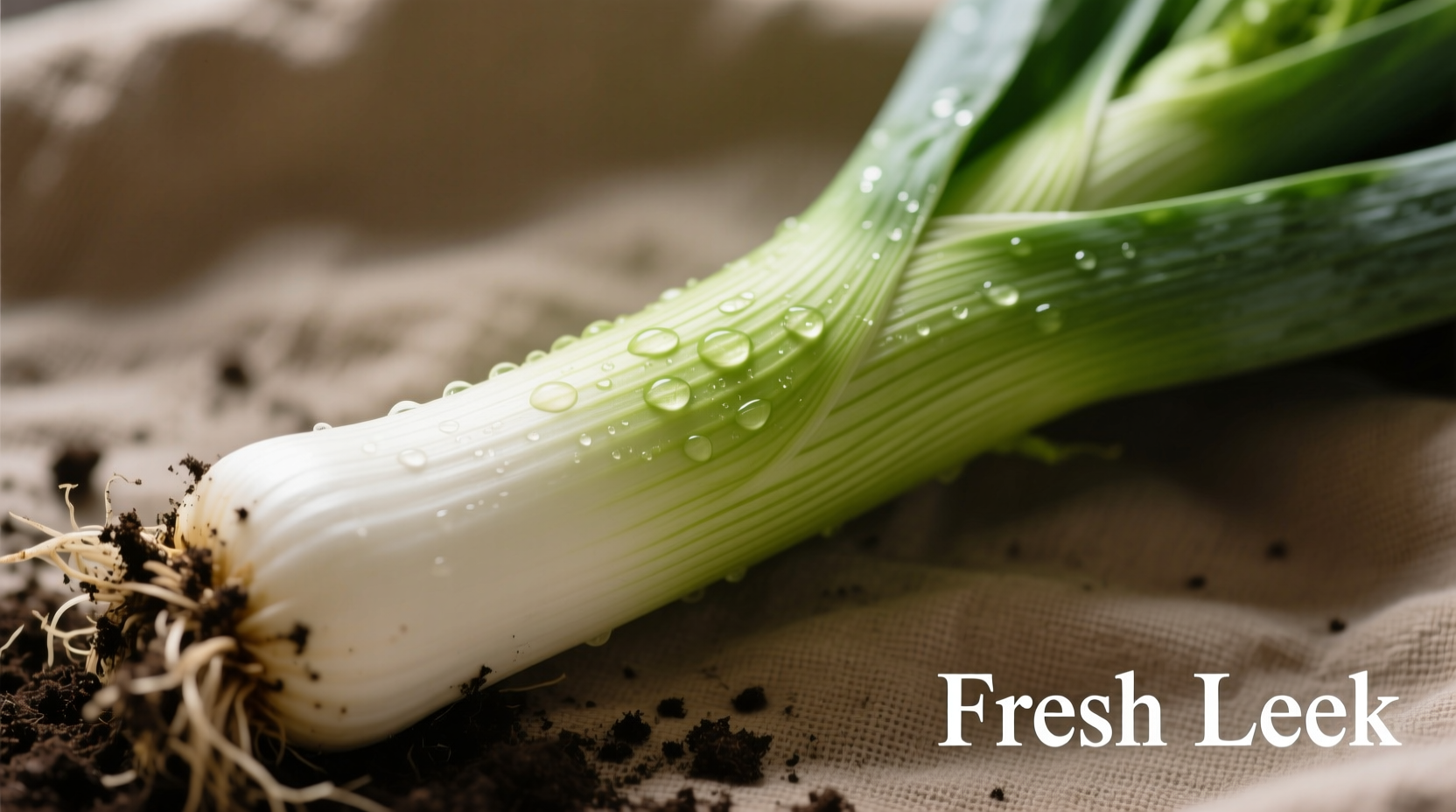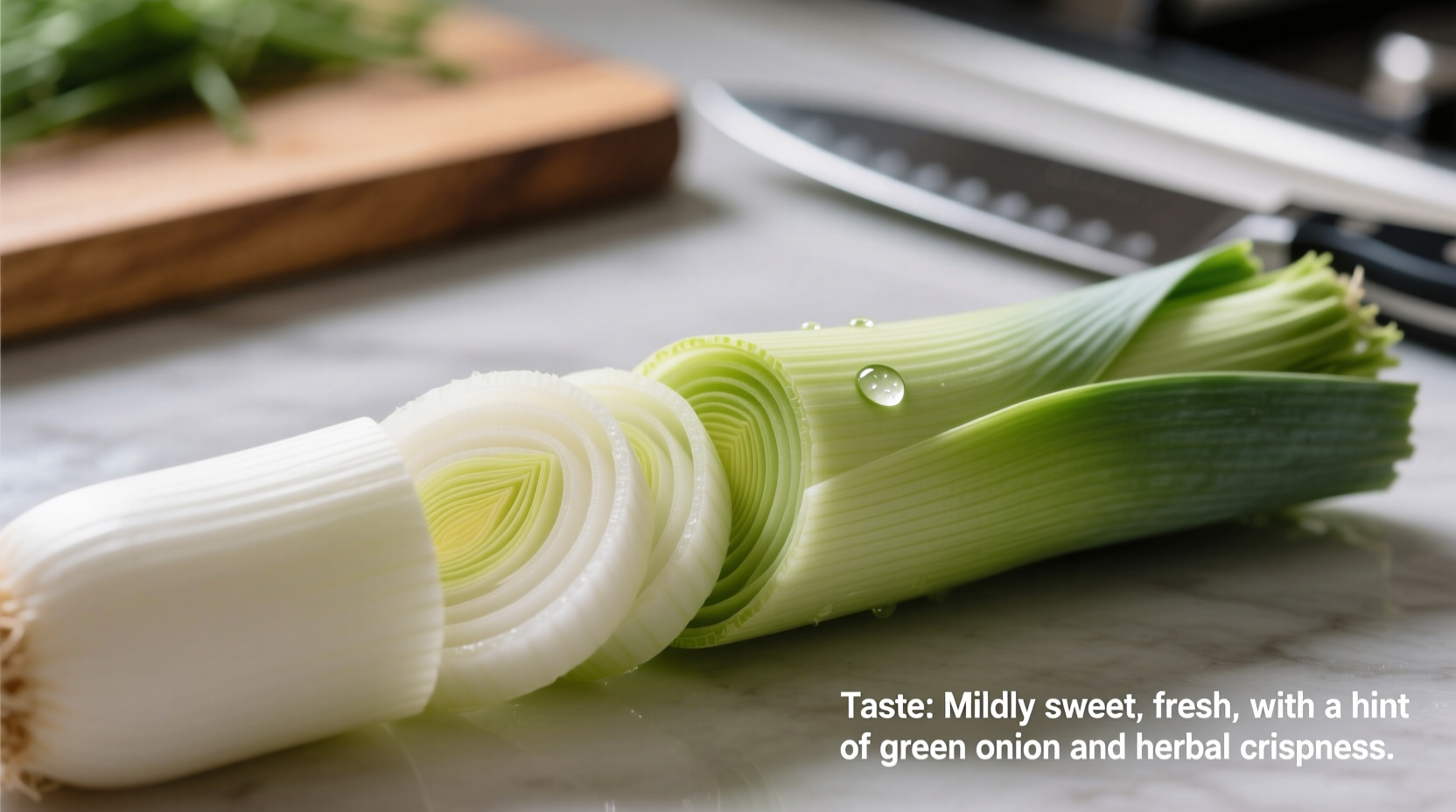Ever wondered what makes leeks the secret weapon in French potage or Scottish cullen skink? Unlike their sharper allium cousins, leeks deliver a sophisticated flavor profile that transforms dishes with nuanced sweetness. As a French-trained chef with decades of experience balancing delicate flavors, I've discovered how this humble vegetable elevates everything from weekday soups to Michelin-starred sauces.
Your First Encounter with Leeks
When you slice into a fresh leek, you'll notice an immediate difference from onions—no tears, just a clean, grassy aroma. The white and light green sections provide the most concentrated flavor, while the dark green tops offer subtle herbal notes perfect for stocks. Raw leeks have a crisp texture similar to celery but with a distinctive mild onion essence that's never overwhelming. This makes them ideal for salads where you want onion flavor without the burn.
| Allium Type | Raw Flavor Profile | Cooked Transformation | Best Culinary Uses |
|---|---|---|---|
| Leeks | Mild, sweet, subtle onion | Buttery, caramelized sweetness | Soups, quiches, braises |
| Yellow Onions | Sharp, pungent, acidic | Deep caramel, complex umami | Sautés, roasts, sauces |
| Scallions | Peppery, bright, grassy | Subtle onion essence | Garnishes, stir-fries, dips |
How Cooking Transforms Leek Flavor
The magic happens when heat meets leeks. Unlike onions that develop sharp acidity when sautéed, leeks undergo a beautiful transformation. Their natural sugars caramelize slowly, creating a rich, buttery sweetness that forms the perfect flavor foundation. For optimal results, slice leeks lengthwise to preserve their delicate structure, then wash thoroughly to remove trapped soil—this prevents grittiness that could ruin their subtle flavor.
Professional chefs know that cooking temperature dramatically affects leek flavor. At medium-low heat, they develop complex sweetness over 15-20 minutes. High heat creates delicious charred edges with nutty notes, while slow braising yields melt-in-your-mouth tenderness. The University of California Cooperative Extension confirms that alliums like leeks contain fructooligosaccharides that break down into simpler sugars during cooking, explaining their remarkable sweetening effect (UCCE, 2023).

When Leeks Shine (and When to Choose Alternatives)
Understanding context boundaries prevents culinary disappointment. Leeks excel in dishes where you want gentle onion flavor without dominance—think delicate fish chowders, creamy potato-leek soup, or as a base for sauces. Their mildness makes them perfect for children's meals or when serving guests who dislike strong onion flavors.
However, avoid substituting leeks in recipes requiring sharp onion punch, like pico de gallo or onion rings. Their higher water content means they won't crisp like onions when fried. For raw applications, use only the tender inner layers—the dark green parts become unpleasantly fibrous when uncooked. The USDA's National Nutrient Database shows leeks contain 30% less sulfur compounds than yellow onions, explaining their milder profile (USDA FoodData Central).
Selecting and Preparing for Maximum Flavor
Choose firm, straight leeks with crisp blue-green tops—avoid yellowing or wilting. Larger leeks (over 1.5 inches diameter) develop more pronounced earthy notes, while slender varieties offer delicate sweetness. Store unwashed in the refrigerator's crisper drawer for up to two weeks.
Proper cleaning is non-negotiable for optimal taste. Slice according to your recipe, then submerge in cold water, swishing to release trapped soil. Drain in a colander—never skip this step, as gritty leeks ruin the eating experience. For soups and stews, cut into half-moons; for roasting, leave whole with roots intact to prevent disintegration.
Avoid These Common Leek Mistakes
Many home cooks waste leeks' potential through three critical errors: overcooking (they turn mushy beyond 25 minutes), underwashing (gritty texture ruins dishes), and discarding dark greens (simmer these in stocks for herbal complexity). Remember that leeks continue cooking off-heat, so remove them from pans when slightly firmer than desired.
For restaurant-quality results, try the French technique of sweating leeks: cook slowly in butter with a pinch of salt until translucent but not browned. This draws out maximum sweetness while preserving delicate flavor. Add a splash of dry vermouth during cooking to enhance their natural umami—a trick I learned during my training at Le Cordon Bleu that transforms simple dishes into culinary masterpieces.











 浙公网安备
33010002000092号
浙公网安备
33010002000092号 浙B2-20120091-4
浙B2-20120091-4